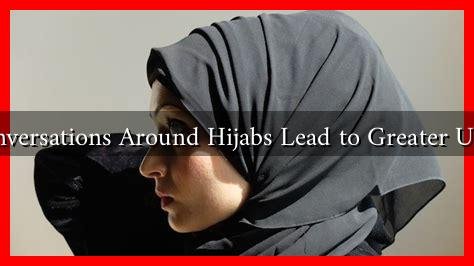-
Table of Contents
How Can Conversations Around Hijabs Lead to Greater Understanding?
The hijab, a traditional headscarf worn by many Muslim women, has become a focal point of discussion in contemporary society. While it is often viewed through the lens of cultural and religious identity, conversations surrounding the hijab can also serve as a bridge to greater understanding among diverse communities. This article explores how these discussions can foster empathy, challenge stereotypes, and promote inclusivity.
The Significance of the Hijab
For many Muslim women, the hijab is more than just a piece of clothing; it is a symbol of faith, identity, and empowerment. Understanding its significance is crucial for fostering meaningful conversations. Here are some key points to consider:
- Religious Obligation: For many, wearing the hijab is a religious duty rooted in Islamic teachings.
- Cultural Identity: The hijab can also represent cultural heritage and personal identity, varying in style and significance across different communities.
- Empowerment: Many women view the hijab as a form of empowerment, allowing them to express their beliefs and values freely.
Breaking Down Stereotypes
Conversations about the hijab can help dismantle harmful stereotypes that often surround it. Misconceptions about Muslim women being oppressed or submissive can be challenged through open dialogue. Here are some ways these conversations can help:
- Personal Narratives: Sharing personal stories from hijab-wearing women can humanize their experiences and dispel myths.
- Education: Informative discussions can clarify the diverse reasons women choose to wear or not wear the hijab, emphasizing that choice is often a key factor.
- Media Representation: Advocating for accurate representation in media can help shift public perception and promote understanding.
Case Studies: Successful Dialogues
Several initiatives have successfully fostered conversations around the hijab, leading to greater understanding and acceptance. Here are a few notable examples:
- The Hijab Project: This initiative encourages women to share their hijab stories through photography and interviews, showcasing the diversity of experiences and promoting dialogue.
- Interfaith Dialogues: Many communities have organized interfaith events where individuals from different backgrounds come together to discuss their beliefs, including the significance of the hijab.
- Social Media Campaigns: Hashtags like #HijabDay and #MyHijabStory have gained traction, allowing women to share their experiences and connect with others globally.
The Role of Education in Promoting Understanding
Education plays a pivotal role in fostering understanding around the hijab. Schools and universities can implement programs that promote cultural awareness and sensitivity. Here are some strategies:
- Curriculum Development: Incorporating lessons on Islamic culture and the significance of the hijab can help students appreciate diversity.
- Workshops and Seminars: Hosting workshops that invite speakers from various backgrounds can facilitate open discussions and encourage questions.
- Peer-to-Peer Learning: Encouraging students to engage with peers from different cultures can foster empathy and understanding.
Conclusion: The Path Forward
Conversations around the hijab are essential for promoting greater understanding and acceptance in our increasingly diverse world. By breaking down stereotypes, sharing personal narratives, and fostering educational initiatives, we can create a more inclusive society. The hijab, often seen as a symbol of division, can instead become a powerful tool for dialogue and connection. As we engage in these conversations, we not only empower hijab-wearing women but also enrich our own understanding of cultural diversity.
In summary, embracing discussions about the hijab can lead to:
- Increased empathy and understanding among different communities.
- Challenging and dismantling harmful stereotypes.
- Promoting inclusivity and respect for cultural differences.
For more insights on cultural understanding, you can visit Cultural Awareness.

